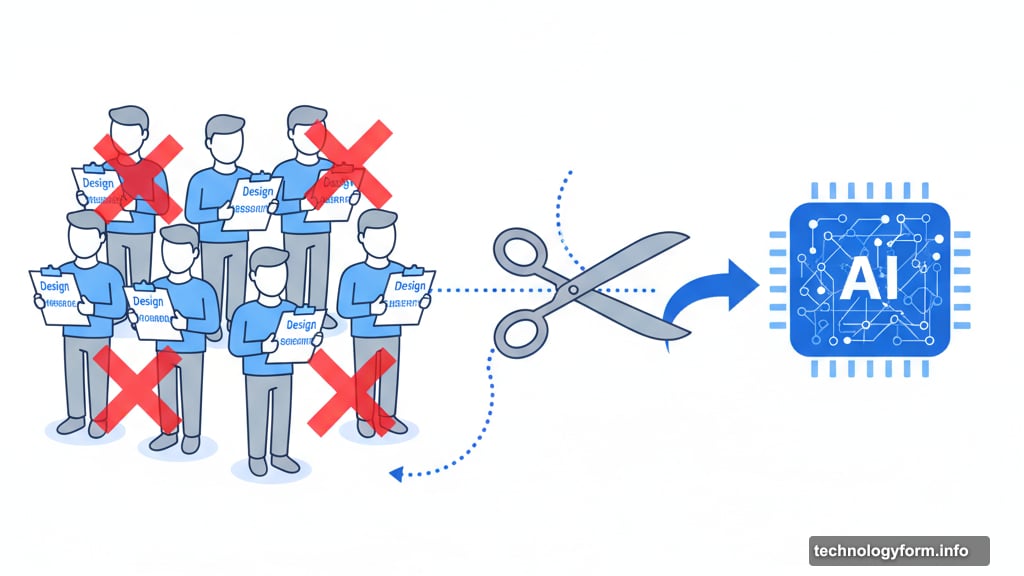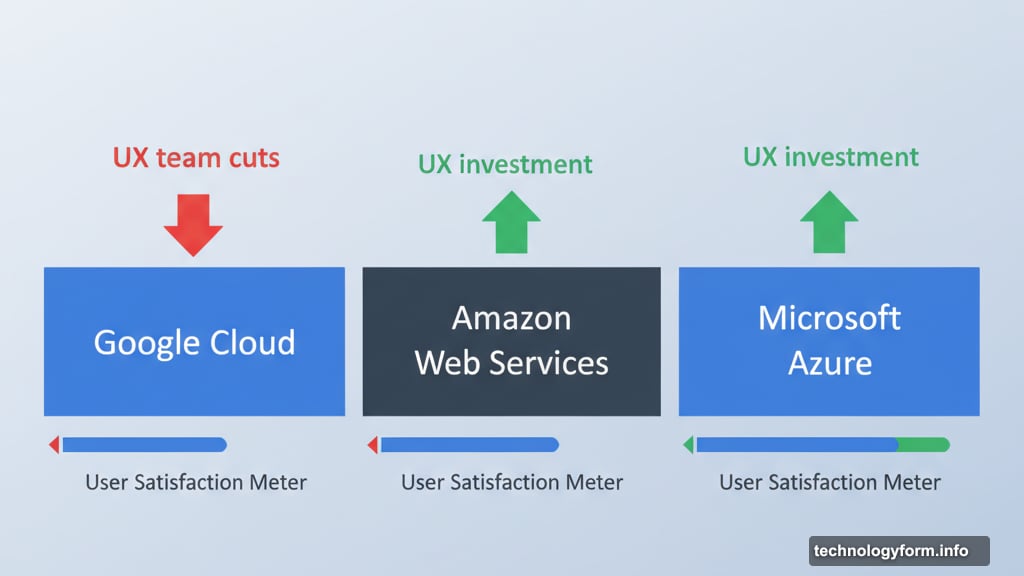Google Cloud Slashes Design Teams. Here’s Why That Matters
Google just gutted its cloud design teams. Over 100 employees lost their jobs this week, with some teams cut in half.
This isn’t about poor performance. It’s about priorities. Google’s betting everything on AI infrastructure, and design research is paying the price. So what does this mean for the products millions of businesses rely on?
What Actually Happened
Google eliminated more than 100 positions from its cloud unit’s design-focused teams. The cuts hit hardest in “quantitative user experience research” and “platform and service experience” groups.
These weren’t random layoffs. Google specifically targeted roles that study how people actually use products. These teams collect data, run surveys, and analyze user behavior to make products better. Now many of those positions simply don’t exist.
The timing tells you everything. Google gave affected employees until early December to find new internal roles. That’s corporate speak for “we’re done with this function.” Plus, most cuts hit U.S.-based positions, suggesting the company sees these roles as expendable rather than essential.
Why Design Teams Got the Axe
Follow the money. Google’s pouring billions into AI infrastructure right now.
CEO Sundar Pichai told employees back in August that Google needs to “be more efficient as we scale up so we don’t solve everything with headcount.” Translation: AI costs a fortune, so other departments must shrink.
Moreover, Google’s been cutting aggressively all year. The company offered voluntary exit packages across human resources, hardware, search, ads, marketing, finance, and commerce divisions. They also eliminated over one-third of managers overseeing small teams.
But here’s the kicker. Google recently started pushing employees to use more AI in their daily work. Apparently, the company believes AI can replace the human insight that design researchers provided. That’s a bold assumption we’ll test in real time.

The Real Cost of These Cuts
Design research teams do something AI can’t replicate. They understand why users struggle with features, not just that they struggle.
Take Google Cloud’s interface. It’s notoriously complex, even for experienced developers. Design researchers would identify specific pain points through testing and interviews. Then they’d recommend improvements based on real user feedback.
Without those teams, Google relies more on automated analytics and AI-generated insights. Sure, those tools show what users do. But they miss the crucial context of why users do it. That difference matters enormously for product quality.
Furthermore, Google Cloud competes fiercely with Amazon Web Services and Microsoft Azure. Both competitors invest heavily in user experience. So Google’s cutting design staff while rivals double down on it. That’s a risky strategy in a market where ease of use drives customer decisions.
Google’s Not Alone in This
The tech industry’s in full cost-cutting mode. Microsoft laid off 9,000 employees in July. Meta’s been trimming staff too. Everyone’s chasing the same goal: redirect spending toward AI development.
But Google’s approach stands out. The company’s not just reducing headcount. It’s systematically eliminating entire categories of expertise. Design research, middle management, and specialized roles across divisions.
This reflects a deeper belief. Tech leaders think AI will eventually handle functions that currently require human judgment. Maybe they’re right. But we’re about to find out through the products that millions of businesses depend on daily.
What Comes Next for Cloud Products
Expect faster feature rollouts with less polish. Without dedicated design research teams, Google Cloud will likely ship products based on engineering priorities rather than user needs.

That could work for highly technical users who adapt quickly to complex interfaces. But it creates problems for smaller businesses that need intuitive tools without extensive training.
Also, watch for increased reliance on automated feedback systems. Google will probably lean heavily on in-app surveys, usage analytics, and AI-generated insights. Those tools provide useful data. But they can’t replicate the depth of understanding that comes from talking directly with users about their frustrations and needs.
Finally, internal teams at Google will feel this change. Product managers and engineers lost their go-to resources for user insights. Now they’ll make more decisions based on assumptions rather than research. Sometimes those assumptions prove correct. Sometimes they don’t.
The Bigger Picture Nobody Mentions
Here’s what bothers me about these cuts. Google’s treating design research as a luxury rather than a necessity.
But user experience isn’t optional in enterprise software. It directly impacts productivity, adoption rates, and customer satisfaction. Companies that ignore UX eventually lose customers to competitors who prioritize it.
Google can afford some mistakes given its market position. Still, this decision reveals how the company views product development. Features and infrastructure matter more than usability. Speed matters more than refinement. AI insights matter more than human expertise.
That philosophy might work short-term. Long-term? We’ll see how customers respond when Google Cloud products become harder to use while AWS and Azure invest in better experiences.
Your move, Google. Hope the AI can actually replace what you just eliminated.






